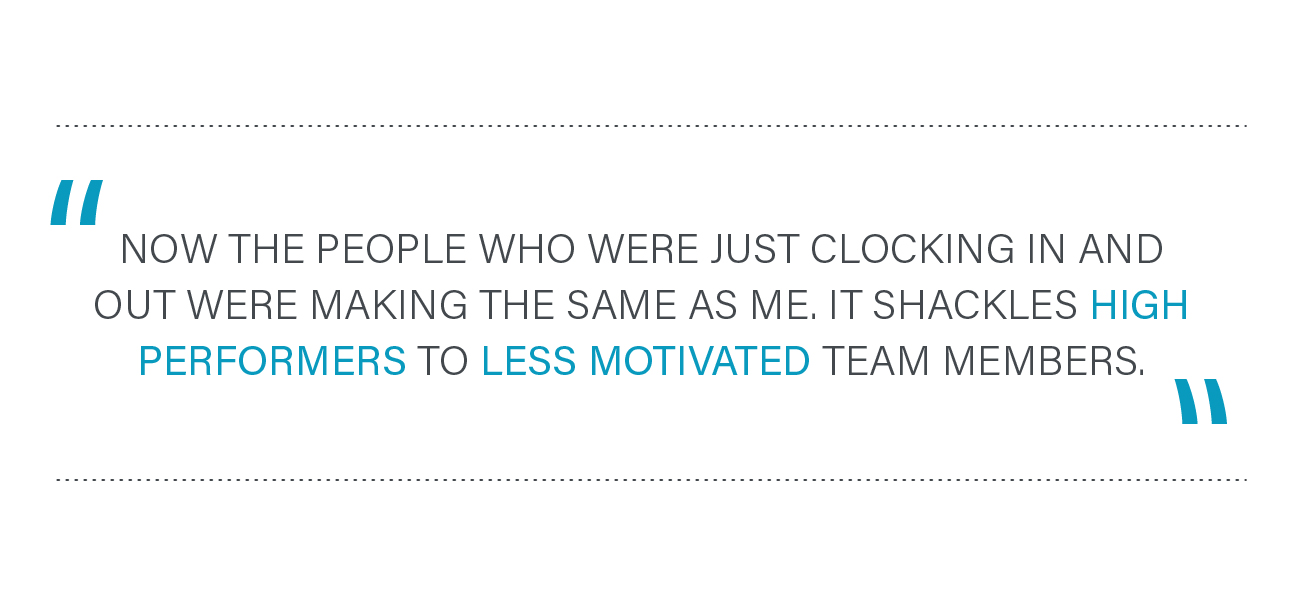In 2015, Gravity Payments, a Seattle-based credit card processing firm, tried something unorthodox: Chief Dan Price set a new minimum salary of $70,000, even sacrificing some of his own to make it happen.
It made national news. Résumés poured in.
But this seemingly heroic gesture also had unexpected consequences: Two of Price’s most valued employees quit, spurred by the personal view that it was unfair to double the pay of some new hires while the longest-serving staff members got small or no raises.

As one of those departing employees stated, “Now the people who were just clocking in and out were making the same as me. It shackles high performers to less motivated team members.”
And this was not lost on the new employees, some of whom exhibited a crisis of conscience. Said one, “Am I doing my job well enough to deserve this [raise]? I didn’t earn it.”
While this scenario is an extreme example, it illustrates how raising all salaries, without acknowledging individual performance, can backfire.
How salary compression happens
Salary compression – wherein organizations have negligible differences in pay between people with differing skill sets and/or experience – is notorious for leading to low productivity, low morale and high turnover.
Salary compression also can happen organically, without detection or choice. It can materialize in a variety of ways, often when:
- longer-tenured employees were hired at lower salaries, and annual increases have not kept pace with current market demands/inflation
- a job requires a “hot skill” that led the company to raise the starting salary to attract the right talent
- the nature of the job changes
By design, a pay-for-performance system eliminates the arbitrariness and subjectivity of compensation that can lead to salary compression by establishing ways to measure what matters most of all: an employee’s productivity, performance and results.
To learn more about establishing a pay-for-performance system at your organization, download our free white paper, Pay for Performance: Inspiring Your Best Employees to Be Happy, Productive and Profitable.
